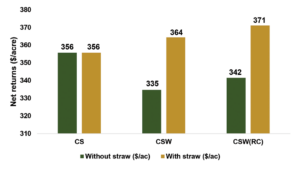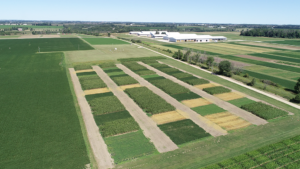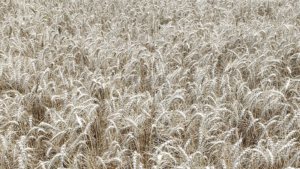Winter wheat rotation
AGRONOMIC INFORMATION FROM ONTARIO'S CROP SPECIALISTS

Ontario Ministry of Agriculture, Food and Rural Affairs
IN ONTARIO, WE know that winter wheat in rotation improves corn and soybean yields. But with greater revenue coming in during corn and soybean years, the real question is whether these yield benefits outweigh revenue reductions from wheat years.
DIGGING INTO THE NUMBERS
To provide an answer, University of Guelph researchers recently published a study, ‘Corn and soybean yields and returns are greater in rotations with wheat.’ Comparing net returns across crop rotation treatments at the long-term rotation-tillage system trial at Elora (Figure 1) and its sister site in Ridgetown. They conducted a thorough economic analysis using cost assumptions from the Ontario Ministry of Agriculture, Food and Rural Affairs’ 2017 Field Crop Budgets publication and average crop prices from 2013-2017.
NET RETURNS INCREASE WITH WHEAT IN ROTATION — STRAW REVENUE KEY
On average, from 2002-2017, including winter wheat in rotation once every four years increased first-year corn yields at Elora by over eight bu/ac. At Ridgetown, in a three-crop rotation, it increased yields by nearly six bu/ac compared to corn in rotation with only soybeans. At both sites, soybean yields were five bu/ac higher with wheat in rotation.
When it came to net returns, wheat also shined.

During the first 20 years of the trial at Elora, net returns were similar for corn-soybean rotations with wheat versus without, with potential revenue from straw breaking the tie. From 2002 to 2017, however, net returns were $10-14/ac higher with wheat in rotation, even without selling straw.
At Ridgetown, net returns from 2012 – 2017 in a three-crop (corn-soybean-wheat or corn-soybean-wheat(red clover)) rotation were $8-15/ac greater than a corn-soybean rotation, assuming straw sales at $0.03/lb (Figure 2).

BOTTOM LINE
Winter wheat in rotation once every three or four years adds value to the entire cropping enterprise. Although these economic benefits can take time, Ontario farmers are realizing immediate value through practices such as seeding annual forages following wheat harvest, underseeding red clover, and minimizing compaction with summer manure applications. To read the extended version of this article, visit www.fieldcropnews.com.
We are fortunate to have long-term trials in Ontario and dedicated technicians and researchers who manage and study them. The Ontario agriculture community lost one such researcher recently. Ken Janovicek, the lead author of this study, passed away on June 23, 2023. He made a significant contribution to the sector during his career. He will be missed. •
























